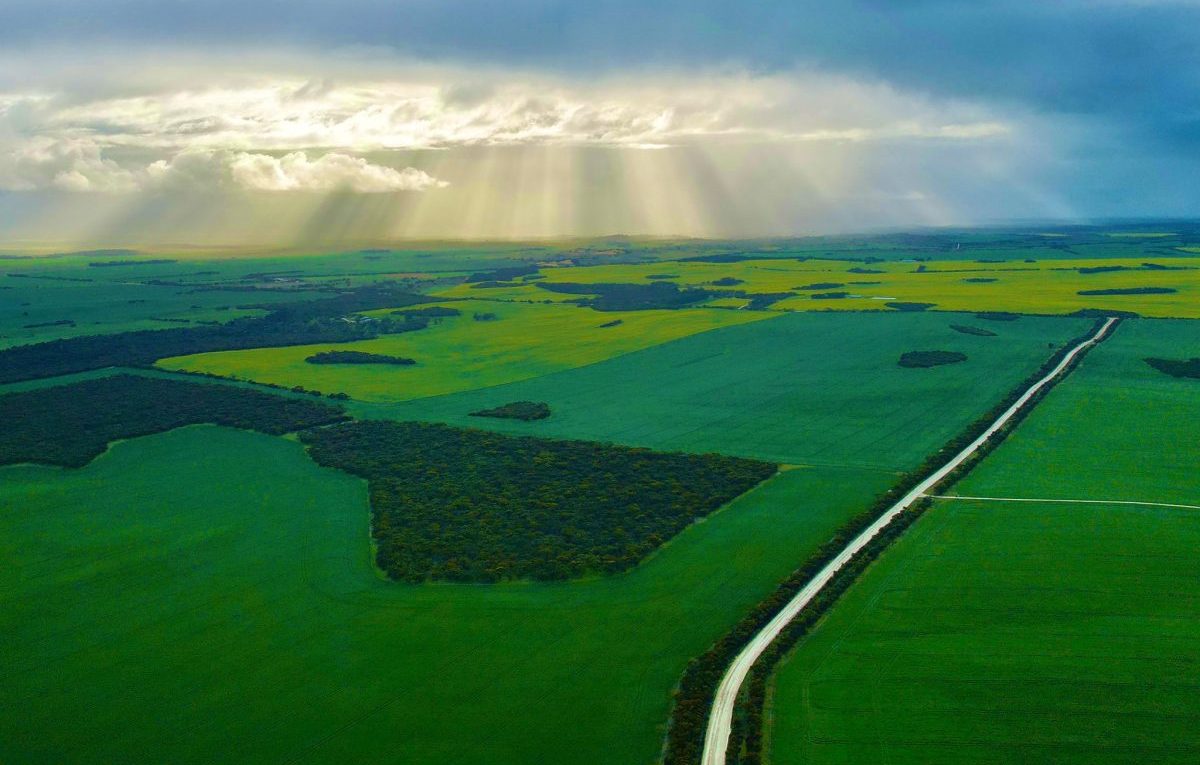
Much of South Australia including the Tailem Bend district received welcome rain in the past week. Photo: Dennis Voznesenski/IG dennis_voz
RECENT rain and more on the forecast are consolidating production prospects in the southern market, where exporters are booking new-crop wheat but showing little interest in barley.
Rumours abound that China is buying up big in the wheat market, with up to 1 million tonnes of new-crop Australian booked in the past month or so, and a significant tonnage of French wheat also.
With NSW still holding big stocks of SFW wheat from last year’s rain-affected harvest, and forecasts pointing towards a wet spring and possibly harvest, domestic consumers can only see downside from current prices.
As growers upping their selling in order to clear out storages ahead of harvest, which will start next month in Central Queensland (CQ), markets are feeling the pressure.
| Prompt | Aug 11 | New-crop | Aug 11 | |
| Barley Downs | $385 | $390 | $375 | $375 |
| SFW wheat Downs | $400 | $410 | $398 | $402 |
| Sorghum Downs | $350 | $360 | $332 | $330 |
| Barley Melbourne | $368 | $388 | $365 | $390 |
| ASW Melbourne | $420 | $428 | $412 | $410 |
| SFW Melbourne | $400 | $420 | nq | nq |
Table 1: Indicative prices in Australian dollars per tonne.
In the week to 9am today, much of the Australian grainbelt had 5-30 millimetres of rain.
While the falls were welcome in South Australia and Victoria especially, they have added to already excessively wet conditions in much of New South Wales.
Highest registrations in NSW for the week include: Condobolin 28mm; Coonamble 39mm; Dubbo 52mm; Grenfell 25mm; Gunnedah 38mm; Mungindi 25mm; Wee Waa 34mm; Wellington 48mm, and West Wyalong 35mm.
In Queensland, falls were likewise patchy, and totals included: Dalby 18mm; Macalister 24mm; Roma 10mm.
Crops in Western Australia had general rain of 15-60mm, and more than 80mm in places including: Badgingarra 142mm; Chapman Valley 105mm; Kellerberrin 63mm, and Moora 90mm.
Prompt northern market sags
The market for sorghum delivered Brisbane remains liquid, based on ongoing demand from China.
“Everything’s going to export from the border, CQ and the Downs,” Goondiwindi broker Gerard Doherty, Knight Commodities, said.
However, minimal buying from domestic consumers, a full supply chain and increased selling from growers has put pressure on wheat and barley prices.
“It’s got a softer tone,” Mr Doherty said.
“Growers have to keep selling; it’s got to be gone by the end of October.”
Based on export demand, the market for protein wheat is still sitting at well above $500/t delivered Brisbane, but rain coupled with ongoing talk of a wet spring has feedgrain consumers in no rush to extend coverage.
Mr Doherty said northern growers were concerned about a wet run into harvest, and do not like the prices on offer for multigrade contracts.
“Our new-crop sales are much lower than this time last year, and the weather has driven a lot of that.”
“Fertiliser is hard to get, and there are a lot of blocks with not enough fertiliser on them because there’s a lot that’s too wet to get into.”
This points to a sizeable chunk of wheat in central and northern NSW and southern Queensland being low protein, and another year of big grade spreads.
“North of the border, milling-grade wheat’s still around.”
The harvest for much of NSW and southern Queensland looks like being one of two halves, an early and a late crop, with a break in the middle to reflect the impact of rain mid planting.
Barley falls away in south
Southern consumers are said to be feeling very comfortable about the market softening ahead of harvest as growers look to sell the last of their grain grown in 2021.
“The market is certainly drifting lower, and it’s barley that seems to be popping up from the grower,” Wilken Grain trader Andrew Kelso said.
“There are still plenty of boats going out and loading barley, but there’s plenty of grain in the Northern Hemisphere now.
“Of all the grains, barley seems the softest.
“Wheat’s holding up pretty well, and seems to be in good demand.”
A favourable end to the growing season is likely to see plenty of barley in NSW, Victoria and South Australia make malting grade, but a wet harvest will push significant tonnage into feed.
Aside from uncertain export demand for it based on price relativity to global corn, feed wheat and barley markets, Mr Kelso said local feed barley may struggle to find support.
“The feedlot industry wants barley in Queensland and NSW; I’m not so sure about other markets.”
SFW and ASW have traded at parity in recent months, and SFW is now well under ASW because of the global softening in feedgrain prices, and the likelihood that plenty more will appear in NSW at least this harvest.
“It’s $20 under now; it could end up being $60.”
Grain Central: Get our free news straight to your inbox – Click here

HAVE YOUR SAY